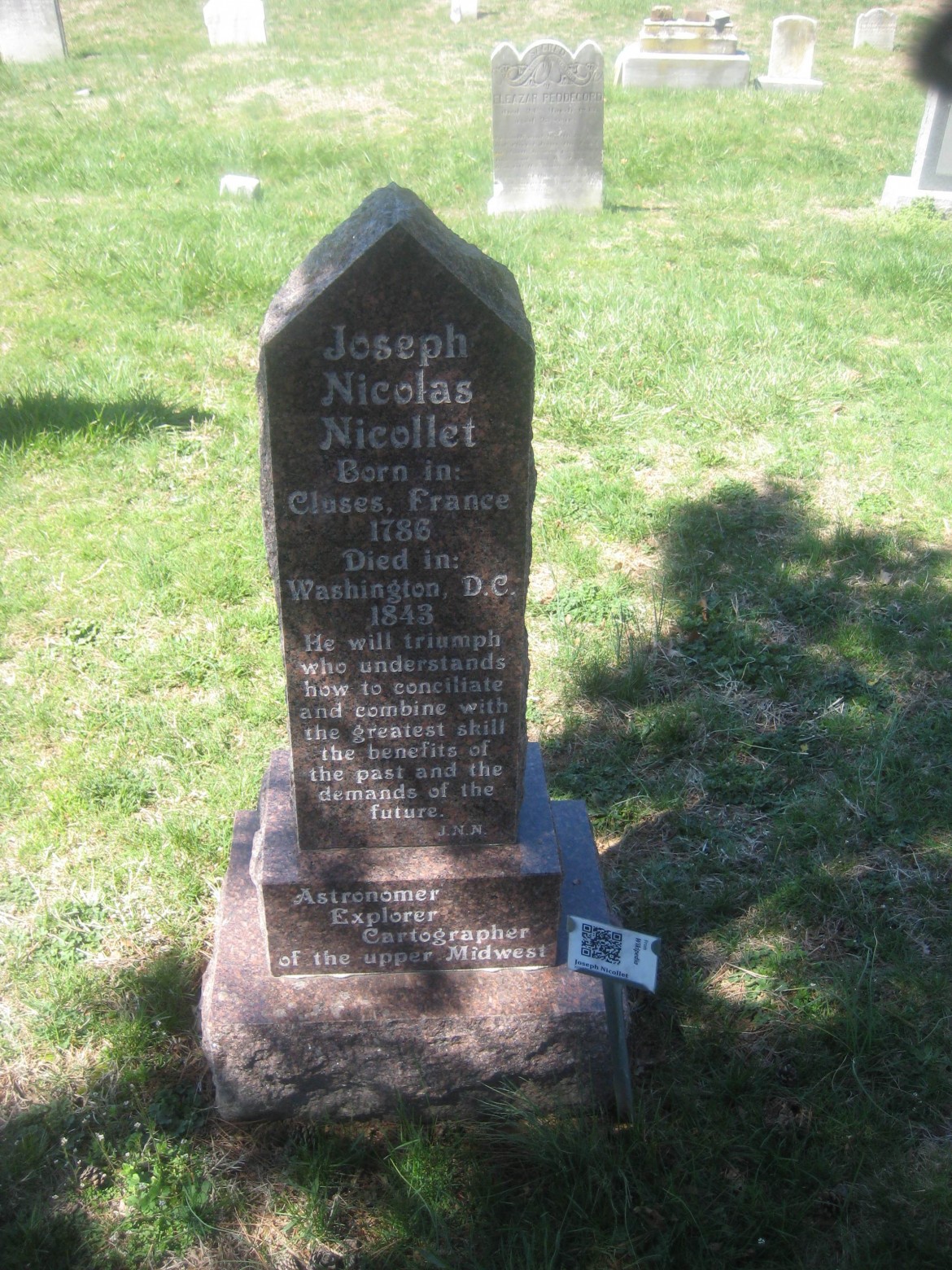
Image: Eric Freedman
Commentary
In life, Joseph Nicollet and Henry Schoolcraft had much in common — the explorer’s sense of adventure, the explorer’s joy of discovery, the explorer’s uncertainties about what may lie around the next bend of a river or over the next ridge.
Their lives overlapped in time — the first part of the 1800s — and in place — the Great Lakes — and in discovery, but they never met.
In death, Joseph Nicollet and Henry Schoolcraft have something else in common — graves of the two Great Lakes explorers less than a football field’s length away from each other in Washington, D.C.’s, historic Congressional Cemetery.
The New York-born Schoolcraft was an ethnologist, geologist and mineralogist. In 1820, he joined an expedition led by Michigan’s territorial governor, Lewis Cass, to the upper Mississippi and Lake Superior copper region. In 1822, he became the federal Indian agent for Lake Superior region tribes in what became northern Michigan, Wisconsin and Minnesota. And from a journalist’s perspective, he was publisher of Michigan’s first literary magazine, The Souvenir of the Lakes.
Now, however, his name is most familiar because of Schoolcraft County in Michigan’s Upper Peninsula, plus two townships, a college and a village in Michigan, as well as a state park, river and county in Minnesota.

Image: Eric Freedman
The French-born Nicollet was a French naval astronomer before immigrating to the United States. The Secretary of War hired him to map the headwaters on the Mississippi River, and he collected detailed information about Native American language and culture.
”Nicollet was very conscious of the changes that would soon follow his explorations, and he dedicated much effort to learning about, and recording, the cultures of the Ojibwa and Dakota, including their names for lakes and rivers and other geographical features,” according to the Nicollet Project at St. Olaf College.
Today, Nicollet County in Minnesota carries his name. So do a city and an island in the state.
[If size matters competitively, Nicollet County, Minn., is 467 square miles in size, a fraction of Schoolcraft County, Mich.’s, 1,884 square miles.]
The Congressional Cemetery began as the Washington Parish Burial Ground in 1807, and now sprawls across 32½ acres in the southeastern part of the nation’s capital. Despite its name, most of those buried there — like Schoolcraft and Nicollet — aren’t former members of the House or Senate.
There are other “men of adventure” buried here too, as the Association for the Preservation of Historic Congressional Cemetery call Schoolcraft and Nicollet, including early explorers of the Rockies, Arctic and California.
And for those of us who care about journalism, Mathew Brady, the groundbreaking Civil War photographer who is credited as the “father of photojournalism,” is buried there. He died in 1896.
So is Anne Royall, whom the association says is considered “the nation’s first newspaperwoman. Her unflinching aggressive reporting earned her many enemies in Washington, leading to a trial on the charge of being a ‘common scold.’” She died in 1854.
Eric Freedman is director of Michigan State University’s Knight Center for Environmental Journalism which publishes Great Lakes Echo. Another version of this column appeared earlier on the center’s website.
